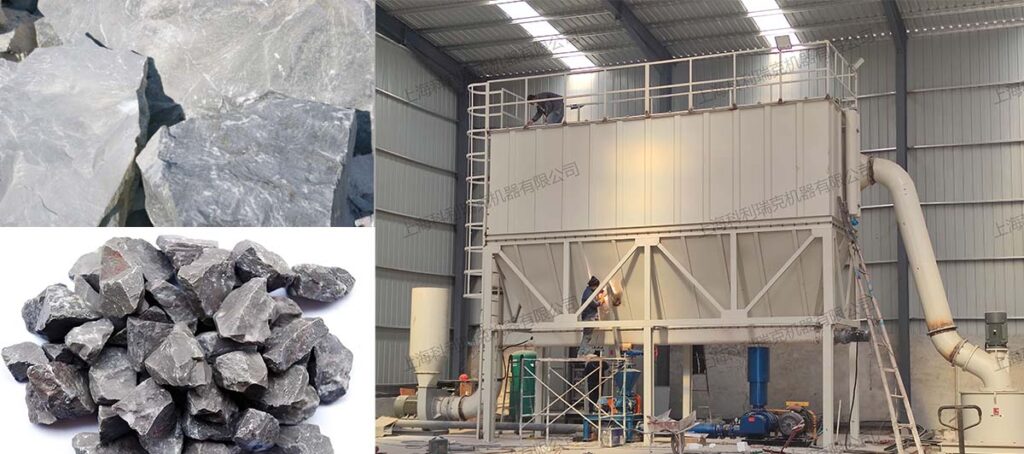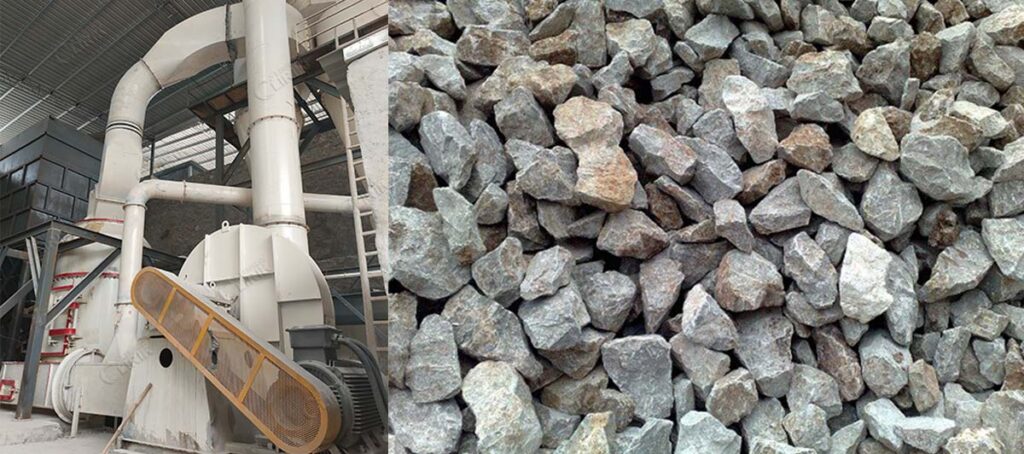Phase 1 – Incoming Inspection & Pre-Conditioning
Lump limestone is weighed, moisture-checked (<3 %), and passed through a metal detector to avoid tramp iron. Oversized particles are reduced in a secondary cone crusher to a uniform 0–10 mm granule.
Phase 2 – Controlled Feed Handling
An enclosed belt conveyor lifts the granules into a sealed buffer bin. A variable-frequency rotary valve then meters the material at 1–2 t/h into the HGM mill, synchronizing throughput with real-time classifier speed.

Phase 3 – Superfine Comminution
Inside the milling chamber, four tiers of grinding rollers revolve around a stationary grinding ring. The limestone is simultaneously impacted, crushed, and attrited, while heated air (≤200 °C) flash-dries any residual moisture, preventing agglomeration.
Phase 4 – Dynamic Classification & Recycle Loop
A frequency-controlled multi-blade classifier operates at 2,500–3,000 rpm to cut the particle size curve sharply at 13 µm (≈1000 mesh). Coarse tailings are pneumatically recycled to the grinding zone; fines exit the classifier outlet.

Phase 5 – Product Recovery & Emission Control
The ultrafine powder is collected in a dual-cyclone system achieving 99.2 % separation efficiency. Remaining dust is trapped in a downstream pulse-jet baghouse before the clean air is vented to atmosphere.
Phase 6 – Post-Processing & Dispatch
The finished 1000-mesh limestone is homogenized in a silo, then pneumatically conveyed to an automatic valve-bag packer (25 kg or 1 t jumbo bags). Each batch is lab-verified for D50, whiteness, and CaCO₃ content before dispatch.
